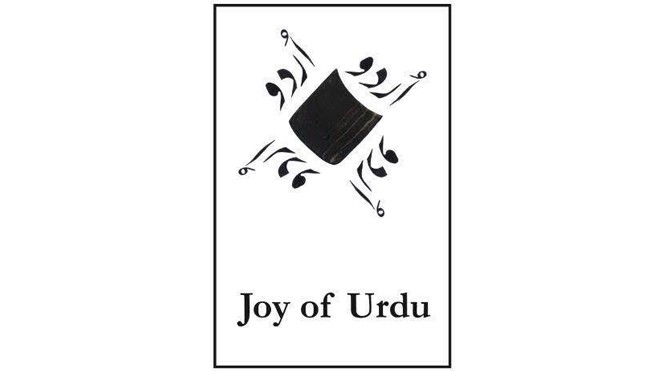
Conversation with Zarminae Ansari on the 'Joy of Urdu' project

Zarminae Ansari, an architect, cultural tourism consultant and journalist who currently resides in Paris, recently founded the Joy of Urdu Reading Group Initiative in order to revitalise Urdu language and reclaim our literary heritage. The bilingual literacy project, which has 160 volunteers, is spread across Pakistan and the rest of the world and seeks to create a space for beginners as well as advanced readers of Urdu. The News on Sunday caught up with Ansari to discuss the group’s aims and ambitions. Excerpts follow:
The News on Sunday (TNS): What inspired you to found Joy of Urdu? Can you tell us a little bit of when this organisation began and under what circumstances?
Zarminae Ansari (ZA): While studying in Canada with students from 60 countries from across the world, I became aware of my embarrassing lack of knowledge about my own literary heritage. Later, while studying architecture at the National College of Arts in Lahore, I was introduced to the poetry of Faiz through friends and the wonderful Faiz Mela.
After getting married, I moved around a lot with my husband’s multinational company. While living in Moscow, I started panicking that my son was not in touch with Urdu. I bought everything I could find on frequent trips to Pakistan, but could not really find the kind of books I wanted for my son. I realised that I had a certain vision for what I wanted him to read and hence and I would have to do this myself.
In August 2013, I floated the idea of Joy of Urdu on social media, and got an overwhelming response. One of my first and most enthusiastic supporters was Sabeen Mahmud. A few weeks before she was shot, she was visiting Paris (where I still reside) when she encouraged me to take my idea to fruition. This project is pretty much all I have done since that day she was shot.
TNS: You mentioned that your first project is a series of bilingual literacy books for children in Urdu, English and regional languages, with illustrations by top artists and illustrators. What themes are these books based on and who is writing them?
ZA: The children’s books include both fiction and non-fiction and are meant to cater to children ranging between 3 to 12 years of age. We have six main series which include: Originals (stories written especially for Joy of Urdu), Classics & Folk Tales (retold regional tales), World Literature (translated and abridged) and Travel Series (which includes both fiction and non-fiction).
We have involved established writers as well as amateurs in this project. In fact, there is a published children’s author and illustrator in Paris, who has many children’s books in publication and who has even worked with the Irish government. When she heard about the Joy of Urdu, she was so excited that she insisted on being a part of it, even though we could not afford her when we were starting out. To our surprise and delight, she presented us a beautiful story with original water colours, which I then brought to Pakistan on my last trip. This story is for our Travel Series, which includes images and references to different countries in the world.
We have been truly honoured by the sincerity and commitment of our writers, translators, artists, and graphic designers who believe in our initiative. Of course, this is an ambitious project and we are working to make it sustainable so that we can eventually produce the 100 Joy of Urdu books we dream of.
Some writers wrote what they wanted, some asked for themes and parameters. Some of our themes are inclusion, learning about differences and physical disabilities.
TNS: Once the children’s books are published, how do you envision the distribution of these books?
ZA: We are working on a sustainable distribution policy. Local bookstores charge up to a 55 percent markup and that may not be the way to go. We hope that private schools will work with us to buy these books, since our production costs will be fairly high. We also hope that the government will eventually support our efforts. We have spoken to The Citizens Foundation about possible ways in which we can provide them our latest publications for children. We are completely confident that our books will reach their audience.
TNS: Your second phase, the series of research-based, bilingual books about culture and the arts, also sounds very exciting. Who is penning these books and for whom are they being produced?
ZA: Our audience for this set of books is adults along with students interested in learning about art, architecture, and culture. These books are either by different authors or by teams of researchers; they are being developed by institutions that we are collaborating with.